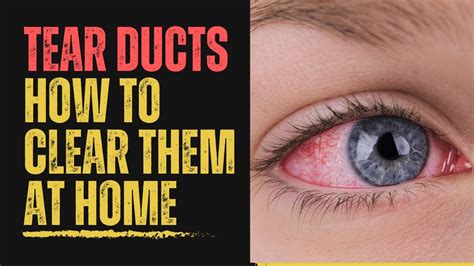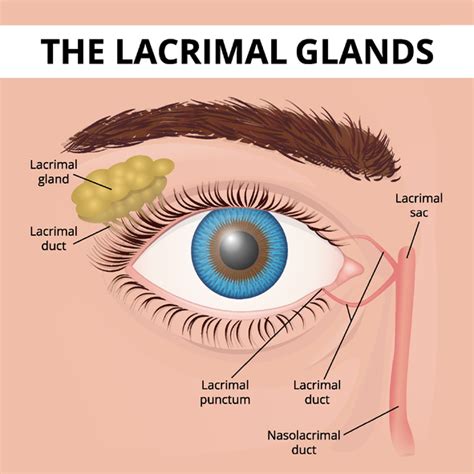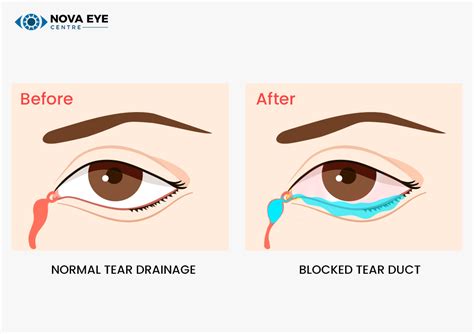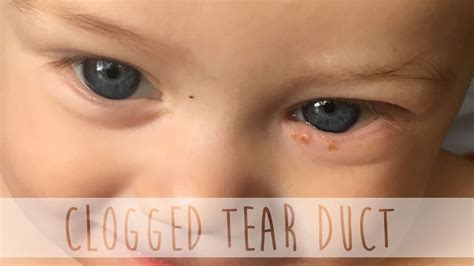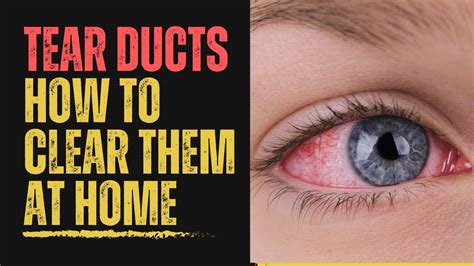A clogged eye duct, also known as a blocked tear duct, can be a frustrating and painful condition that affects millions of people worldwide. The tear ducts play a crucial role in draining tears from the eyes into the nasal cavity, and when they become blocked, it can lead to a range of uncomfortable symptoms, including excessive tearing, redness, and swelling. In this article, we will delve into the importance of addressing clogged eye ducts, the causes and symptoms, and most importantly, the various relief methods available to alleviate this condition.
Clogged eye ducts can be caused by a variety of factors, including narrow ducts, injury, or infection. In some cases, the condition may be congenital, meaning that it is present at birth. Regardless of the cause, it is essential to seek medical attention if symptoms persist or worsen over time. Untreated clogged eye ducts can lead to more severe complications, such as eye infections or vision problems. Therefore, it is crucial to understand the available treatment options and take proactive steps to manage the condition.
The good news is that clogged eye duct relief is available, and there are several effective methods to choose from. From simple home remedies to surgical interventions, we will explore the various approaches to addressing this condition. Whether you are experiencing mild symptoms or more severe complications, this article aims to provide you with a comprehensive understanding of clogged eye ducts and the best ways to find relief.
Clogged Eye Duct Causes and Symptoms
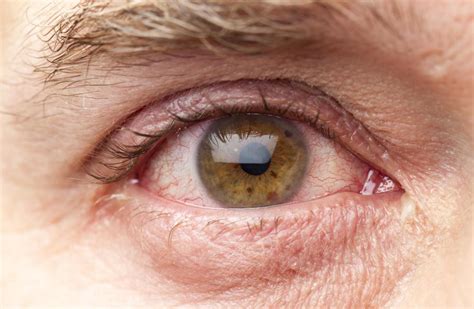
To understand the available relief methods, it is essential to first grasp the causes and symptoms of clogged eye ducts. The condition can be caused by a range of factors, including:
* Narrow ducts: Some people may be born with narrow tear ducts, which can increase the risk of blockages.
* Injury: Trauma to the eye or surrounding area can cause the tear ducts to become blocked.
* Infection: Bacterial or viral infections can lead to inflammation and scarring, which can block the tear ducts.
* Aging: As we age, the tear ducts can become narrower, increasing the risk of blockages.
The symptoms of clogged eye ducts can vary in severity but may include:
* Excessive tearing: Tears may flow excessively down the cheek, rather than draining into the nasal cavity.
* Redness and swelling: The eye and surrounding area may become red, swollen, and inflamed.
* Eye discharge: A thick, yellow or green discharge may form in the corner of the eye.
* Blurred vision: In some cases, clogged eye ducts can cause blurred vision or eye irritation.
Home Remedies for Clogged Eye Duct Relief
Before seeking medical attention, there are several home remedies that can provide clogged eye duct relief. These remedies include:
* Warm compresses: Applying a warm compress to the affected eye can help loosen blockages and promote drainage.
* Massage: Gently massaging the area around the tear duct can help stimulate drainage and relieve blockages.
* Eye drops: Using artificial tears or eye drops can help lubricate the eye and promote drainage.
* Good hygiene: Keeping the eye and surrounding area clean can help prevent infection and promote healing.
Medical Treatments for Clogged Eye Duct Relief
If home remedies are ineffective, medical treatments may be necessary to provide clogged eye duct relief. These treatments include:
* Antibiotics: If the blockage is caused by an infection, antibiotics may be prescribed to clear the infection.
* Steroid injections: In some cases, steroid injections may be used to reduce inflammation and promote drainage.
* Surgery: In severe cases, surgery may be necessary to correct the blockage and restore proper drainage.
Surgical Options for Clogged Eye Duct Relief
Surgical options for clogged eye duct relief include:
* Dacryocystorhinostomy (DCR): This procedure involves creating a new passage for tears to drain from the eye into the nasal cavity.
* Canaliculodacryocystostomy: This procedure involves creating a new passage for tears to drain from the eye into the nasal cavity, using a small tube to connect the tear duct to the nasal cavity.
* Probing: This procedure involves using a small probe to clear blockages in the tear duct.
Preventing Clogged Eye Ducts
Preventing clogged eye ducts is essential to avoid the discomfort and complications associated with this condition. To prevent clogged eye ducts:
* Practice good hygiene: Keeping the eye and surrounding area clean can help prevent infection and promote healing.
* Avoid rubbing the eyes: Rubbing the eyes can cause irritation and increase the risk of blockages.
* Wear protective eyewear: Wearing protective eyewear, such as goggles or glasses, can help prevent injury to the eye and surrounding area.
Clogged Eye Duct Relief for Babies
Clogged eye ducts can be a common condition in babies, and it is essential to seek medical attention if symptoms persist or worsen over time. To provide clogged eye duct relief for babies:
* Use a warm compress: Applying a warm compress to the affected eye can help loosen blockages and promote drainage.
* Massage: Gently massaging the area around the tear duct can help stimulate drainage and relieve blockages.
* Keep the eye clean: Keeping the eye and surrounding area clean can help prevent infection and promote healing.
Clogged Eye Duct Relief for Adults
Clogged eye ducts can be a frustrating condition for adults, and it is essential to seek medical attention if symptoms persist or worsen over time. To provide clogged eye duct relief for adults:
* Use artificial tears: Using artificial tears or eye drops can help lubricate the eye and promote drainage.
* Avoid rubbing the eyes: Rubbing the eyes can cause irritation and increase the risk of blockages.
* Wear protective eyewear: Wearing protective eyewear, such as goggles or glasses, can help prevent injury to the eye and surrounding area.
What are the symptoms of clogged eye ducts?
+
The symptoms of clogged eye ducts can include excessive tearing, redness and swelling, eye discharge, and blurred vision.
How can I prevent clogged eye ducts?
+
To prevent clogged eye ducts, practice good hygiene, avoid rubbing the eyes, and wear protective eyewear.
What are the treatment options for clogged eye ducts?
+
The treatment options for clogged eye ducts include home remedies, medical treatments, and surgical options.
Can clogged eye ducts be treated at home?
+
Yes, clogged eye ducts can be treated at home using warm compresses, massage, and artificial tears.
When should I seek medical attention for clogged eye ducts?
+
You should seek medical attention if symptoms persist or worsen over time, or if you experience severe pain, vision loss, or increased sensitivity to light.
In conclusion, clogged eye ducts can be a frustrating and painful condition, but there are several effective relief methods available. By understanding the causes and symptoms of clogged eye ducts, and exploring the various treatment options, you can take proactive steps to manage the condition and prevent complications. Remember to practice good hygiene, avoid rubbing the eyes, and wear protective eyewear to prevent clogged eye ducts. If you are experiencing symptoms, do not hesitate to seek medical attention to ensure prompt and effective treatment. We invite you to share your experiences and ask questions in the comments section below, and we hope that this article has provided you with valuable insights and information to help you find relief from clogged eye ducts.

